Protecting Native Guadalupe Bass in Texas’ Hill Country
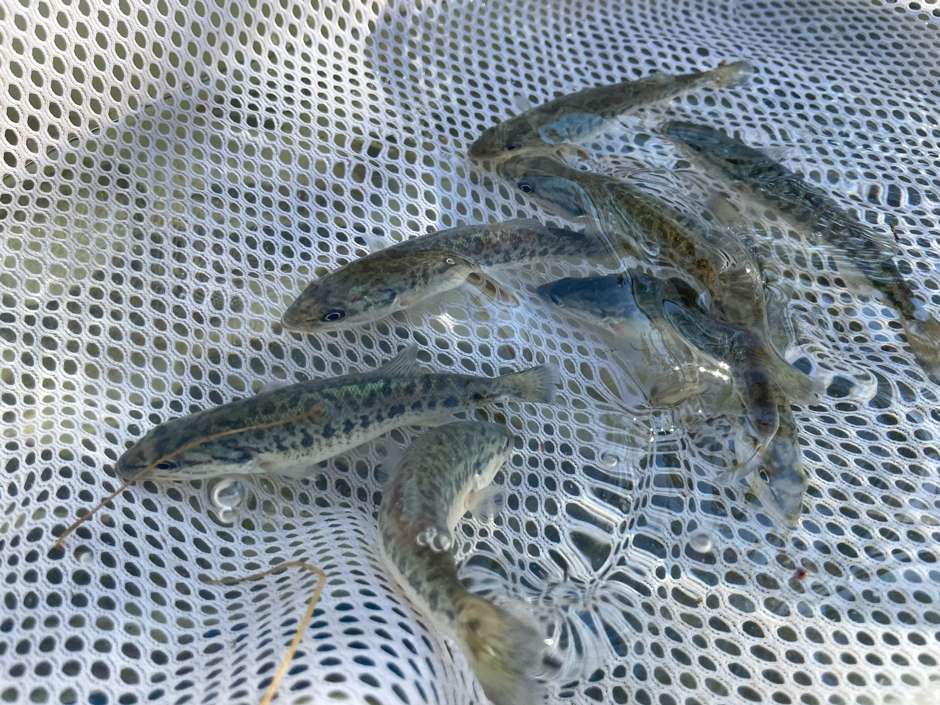 Advanced 4-inch Guadalupe bass fingerlings ready to be stocked. (Credit: Dom Chilleri)
Advanced 4-inch Guadalupe bass fingerlings ready to be stocked. (Credit: Dom Chilleri)When the Texas Parks and Wildlife Department started stocking smallmouth bass in 1974, the goal was to improve fishing in Central Texas—however, the introduction created a new threat to the native Guadalupe bass. Because the two species did not evolve in the same waters, they never developed distinctive spawning habits. Intermingling of the species led to increased hybridization rates and overall declines in pure Guadalupe bass populations.
In order to restore Guadalupe bass populations, the Texas Parks and Wildlife Department (TPWD) set out to stock large quantities of bass in some of the impacted rivers. As of 2018, around 2,300,000 Guadalupe bass had been stocked in the upper Guadalupe River, Blanco River, South Llano River and the San Antonio River.
- 1992-2010 upper Guadalupe River: 1,020,000 stocked
- 2011-2018 South Llanno River: 750,000 stocked
- 2012-2018 Blanco River: 450,000 stocked
- 2015-2016 San Antonio River: 85,000 stocked
Previous stocking efforts helped secure native populations in the rivers by increasing the ratio between native and non-native bass populations.
The efforts were largely successful, but smallmouth bass and hybridization can be found almost everywhere in Texas’ hill country and even still persists in the upper Guadalupe River, according to Nate Smith, a Fisheries Research Biologist with the Texas Parks and Wildlife Department. As a result, stocking efforts have continued in waterways throughout the region, though current efforts are focusing less on quantity and more on quality stocking.
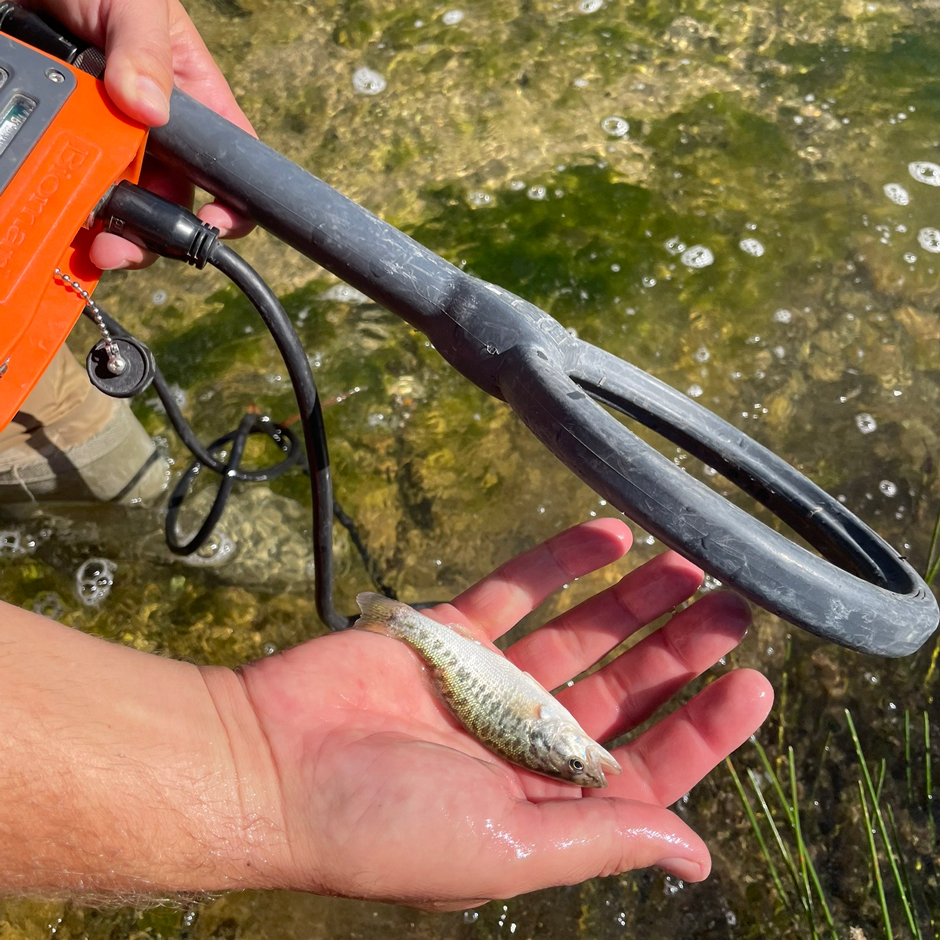
4-inch Guadalupe bass are individually PIT tagged, and tag numbers and locations are recorded upon release. (Credit: Dom Chilleri)
Deciding Where and When to Stock Guadalupe Bass
The initial mass-stocking project ended around 2018 because hybridization rates in target rivers had dropped to such a low level that it was no longer necessary. Since then, the TPWD has focused more on how they can smartly stock waterways to maintain native populations. Smith explains, “We’ve been looking in different basins, to try to assess this and evaluating hybridization rates in some other populations to look for other places where we might want to stock.”
Unfortunately, there is no way to visually identify a hybrid from a native Guadalupe bass, so waterways are assessed for hybridization by catching bass and then running tissue samples through a genetics lab. After the genetic testing, non-hybrids are sometimes relocated to hatcheries for Guadalupe bass wherein the native bass will serve as brood fish to support future stocking.
Results of the genetic testing also help the department’s fisheries team decide where to focus their stocking efforts. While Smith’s research focuses more on determining more effective stocking strategies, in the future, mass stocking will likely resume.
“There are still some populations where we have issues, but we’re working towards ramping up stocking in them again, sometime in the future,” states Smith.
When the Blanco was assessed a decade ago, there were very few native Guadalupe bass that were found, and so the tributary was designated as one of the mass-stocking sites and the hybrids were removed. In the Llano, there was still a decent population of pure Guadalupe left, which allowed the TPWD to simply stock pure Guadalupe fingerlings in addition to the waterway’s existing population.
Smith expands, “Once you get the rate low enough, the [hybrids] will naturally go away, just by genetic drift with more pure bass in the river.”
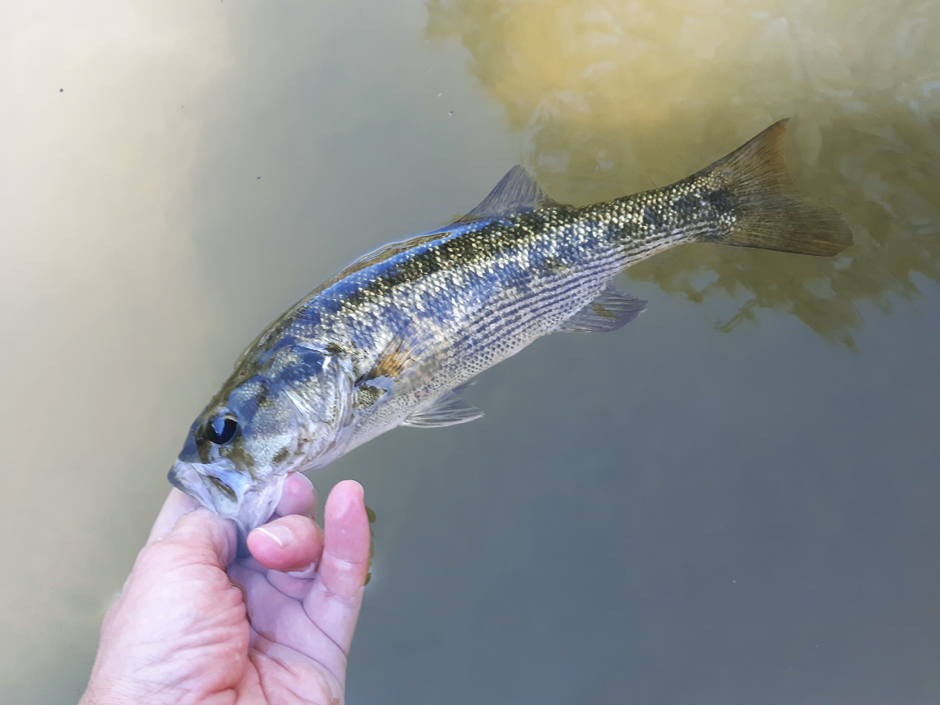
Adult Guadalupe bass caught by angling in the North Fork Guadalupe River, Texas. (Credit: Nate Smith)
Testing Stocking Technique in the Upper Guadalupe
Guadalupe bass stocking has been ongoing since the 90s, and while efforts have been largely successful, Smith believes there is room for growth. The goal of his current research is to test various stocking strategies and find which is the most effective at rapidly rehabilitating the population.
One of these strategies concerns the sizes of the fingerlings stocked. Historically, 2-inch fingerlings would be stocked in June, but larger fish are generally considered to have higher chances of survival. Recent stocking efforts involve both standard 2-inch fingerlings and 4-inch fingerlings tagged with PIT tags. While larger fish may have a higher chance of survival, they are a larger investment and more expensive for the hatchery to rear as the fish take another month or two to reach 4 inches.
The other variable being tested is whether the removal of adult fish has an impact on pure Guadalupe bass populations. Smith clarifies, “We’re able to go in and remove the adult fish from some segments, leave them in the other segments. And then by tracking that, over time, we’ll be able to tell how much difference the removal makes.”
Various combinations of these strategies are deployed through 1-2 kilometer segments of the Upper Guadalupe River. Fish are often stocked nearshore by road crossings but more remote areas require them to be released from a canoe.
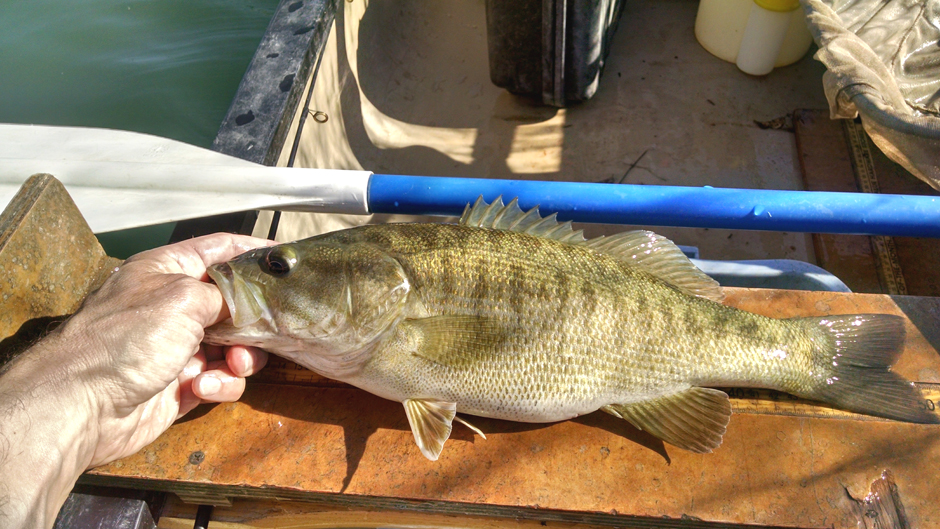
Adult Guadalupe bass caught by angling in Johnson Creek (upper Guadalupe River tributary). (Credit: Nate Smith)
Results and Future Work
Fortunately, no matter how removal and stocking treatments are combined, hybridization rates are going down regardless. Smith explains, “They’re all helping, but we don’t have enough data yet to sort out the nuance of which one might be working better than the others. In the next couple of years, when we get some more data, we should have a better idea.”
So far, results are leaning more toward the 4-inch fish not being worth the time and cost of rearing, but it’s a bit early to tell. The current stocking study is expected to continue for the next couple of years, which will then be followed by an analysis of the strategies. Depending on what combination is deemed most effective, Guadalupe bass will continue to be stocked throughout the hill country using the best method.
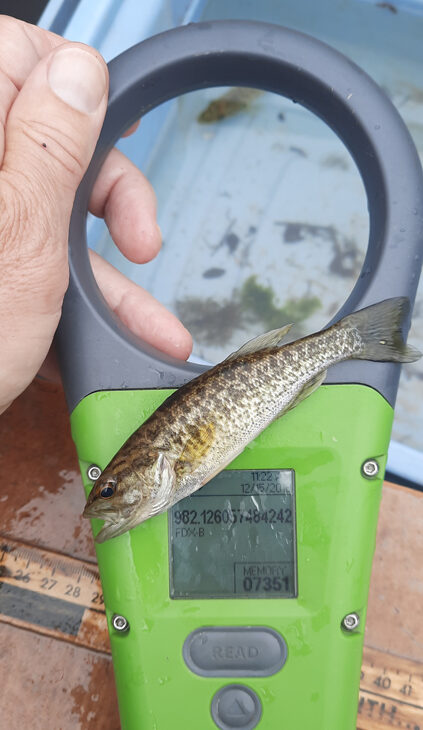
Guadalupe bass juvenile that was stocked as 4-inch fingerling and recaptured later the same year during standard sampling (Credit: Nate Smith)


Pingback: FishSens Magazine | Mass Stocking Could Help Texas’ Guadalupe Bass - FishSens Magazine
Pingback: FishSens Magazine | Brook Trout Management in Michigan’s Upper Peninsula - FishSens Magazine
Pingback: FishSens Magazine | Considerations for Fish Stocking - FishSens Magazine